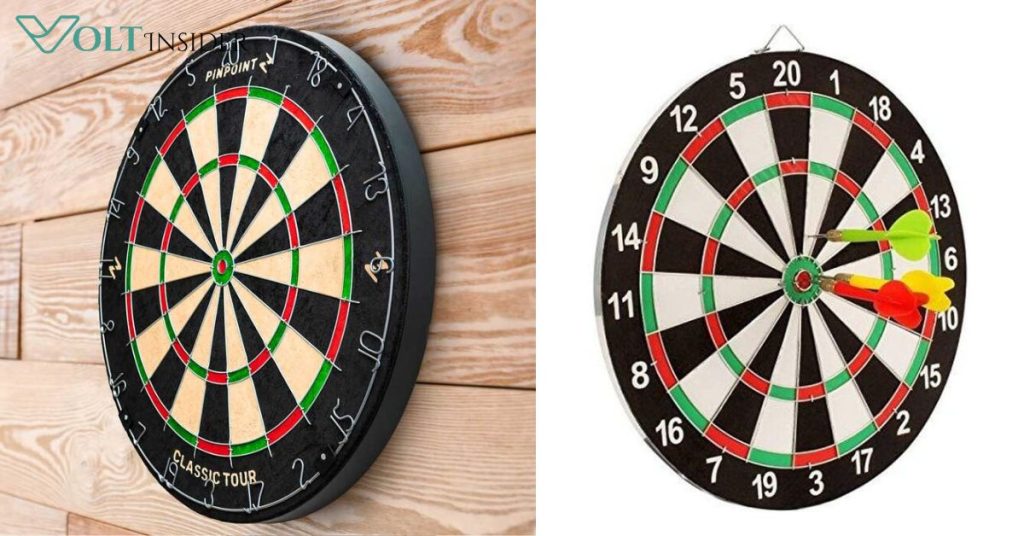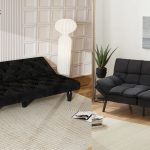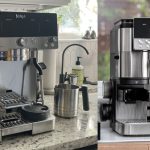Introduction: Why the Right Dart Board Matters
A dart board isn’t just a piece of sporting equipment—it’s the centerpiece of your game room, a source of entertainment, and a surprisingly powerful tool for hand-eye coordination and social bonding. Whether you’re a casual hobbyist or looking to compete seriously, choosing the right dart board makes all the difference in your experience.
Today’s market offers a wide variety of dart boards, each with unique features suited for different users. From traditional bristle boards to modern electronic options, understanding what fits your space, style, and skill level is key. Not only does the right choice improve your gameplay, but it also ensures safety and longevity—two critical considerations in any indoor recreational setup.
A properly selected dart board also reflects your personal taste, budget, and how often you play. For instance, a high-quality board made of sisal fibers will last longer and offer a more authentic experience than a cheaper cork alternative. Add in thoughtful setup and maintenance, and you’re on your way to creating the perfect game room atmosphere.
Types of Dart Boards: Which One is Right for You?
When choosing the perfect dart board for your game room, it’s important to understand the different types available. Each type serves a unique purpose and caters to various playing styles, budgets, and age groups. Below are the most popular types of dart boards you’ll encounter:
Bristle Dart Boards (Sisal Boards)
These are the standard boards used in professional tournaments, made from tightly-packed sisal fibers. They are self-healing, meaning the holes left by darts gradually close, giving the board a longer lifespan. Bristle boards do not require electricity, making them a classic and low-maintenance option for serious players.
Pros:
- Durable and long-lasting
- No power required
- Suitable for steel-tip darts
- Official board for most leagues
Cons:
- Heavier and requires proper mounting
- Not ideal for children due to sharp darts
If you’re looking for authenticity and play regularly, a bristle dart board is your best bet.
Electronic Dart Boards
Electronic dart boards are ideal for casual players, families, and those who enjoy digital scoring. These boards are made of plastic with small holes that register dart hits electronically. They often come with built-in games, sound effects, and multiplayer options, making them fun and interactive.
Pros:
- Automatic scoring and game modes
- Safe for kids (uses soft-tip darts)
- Easy to use for beginners
Cons:
- Requires batteries or a power source
- Less durable than bristle boards
- May not be suitable for serious play
Electronic boards are especially great for social settings or introducing newcomers to the game of darts in a fun and engaging way.
Magnetic Dart Boards
If you have young children or want a safe, mess-free dart experience, magnetic dart boards are a great option. Instead of pointed steel or plastic tips, the darts are equipped with magnets that stick to the board’s surface.
Pros:
- Completely safe for all ages
- Easy to hang and move around
- Affordable
Cons:
- Not suitable for serious play
- Less accurate dart sticking
Magnetic dart boards are perfect for kids’ game rooms or casual play without worrying about safety hazards or wall damage.
Cork and Coiled Paper Dart Boards
These are often marketed as budget-friendly or starter options, especially for casual or occasional use. Cork boards are lightweight but tend to wear out quickly, while coiled paper boards are typically reversible and disposable after extended use.
Pros:
- Very inexpensive
- Great for short-term or occasional use
Cons:
- Short lifespan
- Not suitable for heavy or accurate play
These dart boards may work for one-off events or as a gift for beginners but aren’t recommended for long-term use or serious players.
Key Features to Consider When Buying a Dart Board
Once you’ve selected the type of dart board that best suits your game room, it’s time to look at the finer details. Several features can greatly impact your playing experience, durability of the board, and overall satisfaction with your purchase. Here are the most critical ones to keep in mind:
Material Quality
The material used in the dart board significantly affects its longevity and performance. As discussed earlier, sisal (bristle) is the gold standard due to its self-healing properties and resistance to wear. Look for tightly-packed, high-density sisal boards to ensure better dart retention and long-term use.
Avoid cheap cork or low-quality fiber boards if you plan to play frequently—they tend to degrade quickly and offer poor dart grip.
Wiring System and Bounce-Out Reduction
The wiring system on a dart board—especially the spider (the metal that separates the segments)—plays a vital role in reducing bounce-outs. Thin, staple-free wiring is best as it allows darts to land in their target without being deflected.
Top-quality boards use razor-thin wire or bladed wire systems, which increase scoring potential and improve gameplay.
Number Ring and Rotatability
A removable number ring is a subtle yet essential feature. It allows you to rotate the board, extending its lifespan by distributing wear evenly across all sections. Frequent rotation prevents specific areas, like the 20 and 19 segments, from becoming overly worn.
Some premium boards also come with rotating lock systems, which help keep the board securely in place during intense play.
Mounting and Wall Protection
Another crucial factor is how you mount the dart board. A solid mounting system ensures stability, which is important not just for accurate throws, but also to protect your walls. Some boards come with a bracket mounting kit, while others include a backing surface or cabinet.
If you plan to use steel-tip darts, consider investing in a surround ring or cabinet to shield your wall from stray throws.
Dart Compatibility
Make sure your dart board is compatible with the type of darts you prefer. Steel-tip darts are used with bristle boards, while soft-tip darts are required for electronic boards. Using the wrong dart type can damage the board or reduce playability.
Some modern boards even support both dart types, providing versatility for players who enjoy switching styles.
Dart Board Setup and Installation Tips
Installing your dart board correctly is just as important as choosing the right one. A poorly mounted board can lead to inaccurate throws, bounce-outs, and even damage to your wall or darts. To ensure a safe, tournament-legal setup and long-lasting performance, follow these essential installation tips.
Official Mounting Height and Throw Distance
Whether you’re setting up for casual play or practicing for competition, following standard measurements will enhance your gameplay. According to the World Darts Federation (WDF):
- The center of the bullseye must be 5 feet 8 inches (173 cm) from the floor.
- The throwing distance should be 7 feet 9.25 inches (237 cm) from the board to the front of the toe line (oche) for steel-tip darts.
- For soft-tip electronic boards, the distance is usually 8 feet (244 cm).
Mark the toe line clearly to ensure players maintain consistent distance. You can use tape, a laser oche, or a raised wooden toe line for an authentic feel.
Wall Mounting and Surface Protection
Mounting your dart board on a suitable wall is vital for both safety and stability. The best surfaces are solid wood or masonry walls. Avoid drywall unless you’ve reinforced it with a backing board or cabinet.
Tips for safe and secure mounting:
- Use a U-bracket system or three-point mounting kit for stability.
- Install a dartboard cabinet or backing surface (like cork or foam) to protect your wall.
- Make sure the board is level using a spirit level or built-in guide.
Additionally, rotating the board regularly (especially if it has a movable number ring) helps distribute wear across all sections.
Lighting and Ambience
Good lighting enhances visibility and precision. Position your dart board in a well-lit area, or install dedicated dartboard lighting such as LED halos or wall-mounted spotlights that eliminate shadows without blinding the thrower.
Safety and Surroundings
Always consider the surroundings when installing a dart board. Leave enough space around the board for free movement and avoid placing it near fragile items or walkways. For homes with children or pets, using soft-tip darts or magnetic boards might be a safer alternative.
Installing a dartboard surround ring or using rubber mats on the floor can prevent dart tip damage and protect your flooring.
Top Dart Board Recommendations in 2025
Choosing the right dart board can significantly enhance your gameplay experience. In 2025, several models stand out for their quality, durability, and features. Below are some top recommendations:
Winmau Blade 6 Triple Core
The Winmau Blade 6 Triple Core is a professional-grade bristle dartboard known for its durability and reduced bounce-outs. It features a triple-layered sisal surface and a thin wiring system, making it ideal for serious players.
Key Features:
- Triple-layered sisal surface for enhanced durability
- Rota-Lock mounting system for easy installation
- Thin wiring to minimize bounce-outs
Mission Samurai Infinity Dartboard
The Mission Samurai Infinity is a competition-standard dartboard made from high-quality materials. Its ultra-thin wire construction reduces dart bounce-outs, and the non-fade colors keep the board looking new for longer.
Key Features:
- Ultra-thin wire construction
- Non-fade colors for longevity
- Suitable for professional use
Target Tor Dartboard
The Target Tor Dartboard is praised for its premium build and minimal noise during play. It’s suitable for both beginners and seasoned players, offering easy installation and a professional feel.
Key Features:
- Premium build quality
- Minimal noise during play
- Easy installation
Viper 800 Electronic Dartboard
For those interested in electronic dartboards, the Viper 800 offers a range of features, including automatic scoring and multiple game options. It’s ideal for casual play and family entertainment.
Key Features:
- Automatic scoring system
- Multiple game options
- Suitable for soft-tip darts
Luke Littler Magnetic Dartboard
Designed for safety and fun, the Luke Littler Magnetic Dartboard is perfect for children and beginners. It includes magnetic darts and a double-sided board for darts and archery practice.
Key Features:
- Magnetic darts for safety
- Double-sided board for varied play
- Ideal for children and beginners
Conclusion: Elevate Your Game Room with the Perfect Dart Board
Selecting the ideal dart board for your game room involves more than just picking a board off the shelf. By understanding the different types of dart boards, considering key features, ensuring proper setup, and maintaining your board diligently, you can enhance your playing experience and prolong the life of your equipment.
Remember, regular rotation of the board, keeping it dry, protecting it from direct sunlight, and using well-maintained darts are crucial steps in preserving your dart board’s condition. Implementing these practices ensures consistent performance and enjoyment for years to come.
Frequently Asked Questions (FAQs)
- How often should I rotate my dart board?
- It’s recommended to rotate your dart board regularly to distribute wear evenly. If you play daily, consider rotating it weekly. For less frequent use, rotating it monthly should suffice.
- Can I clean my dart board with water?
- No, avoid using water or any liquids on your dart board. Moisture can damage the sisal fibers and adhesives, leading to warping and reduced lifespan.
- What’s the best way to remove darts from the board?
- Gently twist the dart while pulling it out. This method minimizes damage to the board’s fibers compared to pulling the dart straight out.
- How can I protect my wall from stray darts?
- Using a dartboard cabinet or surround can shield your wall from errant throws. Additionally, placing a backing surface like cork or foam behind the board adds extra protection.






